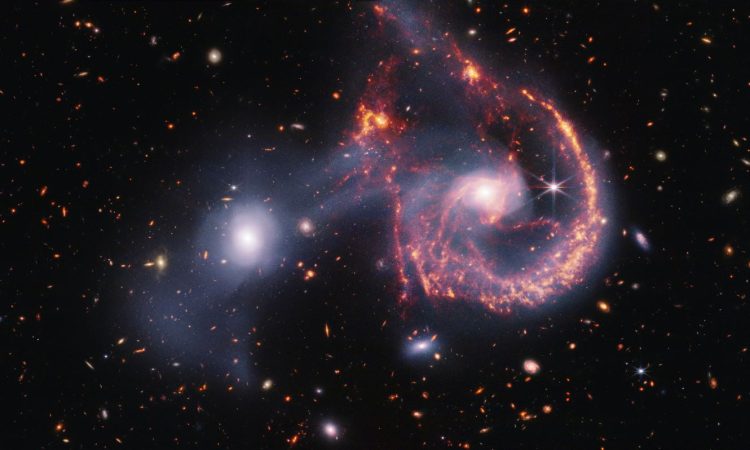A galactic collision 465 million light-years away from Earth, observed with the Webb Telescope

A collision between an elliptical galaxy and a spiral galaxy, the event known as Arp 107, appears to have created a “smiling” image with two “bright eyes” and a “wide semicircular smile”.
The region of outer space was previously observed with NASA’s Spitzer Space Telescope in 2005, but the James Webb Space Telescope has now revisited it in much higher resolution.
The spiral galaxy is classified as a Seyfert galaxy, one of the two large active galaxies, along with quasar host galaxies. Seyfert galaxies are not as bright and distant as quasars, which makes them a good place to study phenomena in infrared light.
A pair of galaxies similar to the Chariot Wheel Galaxy
This pair of galaxies is similar to the Chariot Wheel Galaxy, one of the first galaxies observed by Webb. The structure of Arp 107 might have looked the same as , but since the elliptical galaxy had an eccentric collision instead of a direct hit, the spiral galaxy only lost its spiral arms.
Collisions between galaxies can compress the gas, so the conditions for star formation are improved. On the other hand, as the Webb Telescope has revealed, collisions spread large amounts of gas around, so new stars can be deprived of the material they so desperately need to form, reports .
Webb captured these galaxies during the merging process
The researchers explained that these galaxies during the fusion process, which will last hundreds of millions of years. As galaxies recover from the chaos of the collision, Arp 107 may lose its “smile,” but astronomers believe it will transform into something much more interesting.
The structure Arp 107 is located 465 million light-years away from Earth in the constellation Leo Minor.

